I want to try and make a heating pad for starting seedling plants. I know you can buy those but I think it would be a fun learning experience to try and make one. What I don't know is how to determine the size wire I need and size power supply I need. Is there a formula or equation that lets you determine how hot a wire gets when a current is applied? Like if I have a 20 gauge wire and I apply 5 volts and 20 milliamps to it then it gets this hot. That is just an example. I would have to go backwards on that. I want a heating pad that is between 70 to 90 degrees Fahrenheit.
-
Heat power is easy. (Voltage * current). Just know the resistance of your 20 gauge wire first and use Ohm's Law. Temperature is very much not so easy. – Mar 19 '21 at 13:58
-
You're going to want resistance wire for one thing, not regular old copper. Nichrome or something. – Hearth Mar 19 '21 at 13:58
-
Just a guess. Assuming all energy is converted to heat in the resistor, then \$m.C.deltaT = Q = I^2.R\$ where m is the mass of the wire, and C is the Specific Heat Capacity of the wire material and deltaT is the change in temperature of the wire caused by the heat. – Mitu Raj Mar 19 '21 at 14:27
-
1Does this answer your question? [How do I correctly estimate heat output for heater wire](https://electronics.stackexchange.com/questions/136390/how-do-i-correctly-estimate-heat-output-for-heater-wire) – Elliot Alderson Mar 19 '21 at 14:50
-
@MituRaj Not a good guess. Heat capacity doesn't enter into the steady-state wire temperature, just the time constant. Steady state is when losses from convection, radiation and conduction equal input power. And that will occur at a certain temperature given specific conditions. Not easy to calculate, however. – Spehro Pefhany Mar 19 '21 at 15:27
2 Answers
If you're heating plants then you don't care about wire temperature much - just the power requirements. You can calculate this from \$ P = VI = I^2R = \frac {V^2} R \$, the variations coming from substitutions from Ohm's law, \$ V = IR \$.
The temperature will stabilise at the point where heat lost = power in. The problem is that modelling heat loss can get quite complex.
The standard means of achieving what you want is to use an over-powered heater and a temperature sensor to either switch off or reduce power to maintain soil temperature. That way you can get repeatable temperature control even when the ambient conditions change.
- 168,990
- 12
- 186
- 385
-
Oh ok that makes good sense. I have an Aduino Uno and a temp sensor from a class I took. I could use that to control the ON/OFF of the power. Thank you for your help. I didn't think of that. – Joey Sams Mar 19 '21 at 14:17
-
You can make a simple proportional control then and back-off the power as you approach the setpoint. That might lead you on from a P-only control to PI (proportional-integral) and possibly to PID (proportional-integral-derivative). – Transistor Mar 19 '21 at 14:21
Hello even if you calculate it will not work because water you add and the atmospheric temperature will destroy your settings. The easiest way is adding a temperatue controll circuit to your heater. You have to buy a thermo sensor (10k ntc ) and some op-amp IC (741 op-amp)to design the circuit to keep the temp at 70-90 F as you say. Search "how to make a temperature controller by 741 op-amp". I have made it once to switch on/off a table fan.
Buy a nichrome coil(hot plate coil from an electrical item shop and use a small UPS battery (12 volt) via that circuit. You can use a piece of that nichrome coil. Say 20cm. Put the sensor under your plants. Set the temperature by volume control (variable resistor).

-
1Welcome to EE.SE. The OP has mentioned in the comments that he has an Arduino and temperature sensor. That will be better than analog control. Please don't recommend 741 to anyone except to teach them why it is such a bad op-amp. It's 50 years old and there are much better op-amps available at the same price that will work on a 5 V supply. – Transistor Mar 19 '21 at 14:58
-
Did he say he knows arduino ? I can give him arduino, but i think he does not know arduino. Even he does mot know jule equation p= I2R or V/R2. So i gave a easy way. It is true 741 is olld but most of new op amps are dwell or quards. 741 works well. – upali Mar 19 '21 at 15:21
-
-
Ok. I am wasting time on this boy.If he goes to an arduino class why does he ask such a simple question? – upali Mar 19 '21 at 15:28
-
3Because he learned how to program, not how to calculate power and heatloss. Please show some kindness and understanding. Others could say the same of you for recommending a 741. – Transistor Mar 19 '21 at 15:30
-
Even you use arduino finaly you will have to use the power transistor and the relay in simple. – upali Mar 19 '21 at 15:31
-
Hello mr transistor, i gave him evan a diagram. So how you say to be kindness!!. Why you so angry with 741 ? – upali Mar 19 '21 at 15:37
-
1[Reasons not to use a 741 op-amp](https://electronics.stackexchange.com/questions/304521/reasons-not-to-use-a-741-op-amp). If you check that out you'll see that your circuit WILL NOT work properly using a 741 op-amp. – Andy aka Mar 19 '21 at 15:55